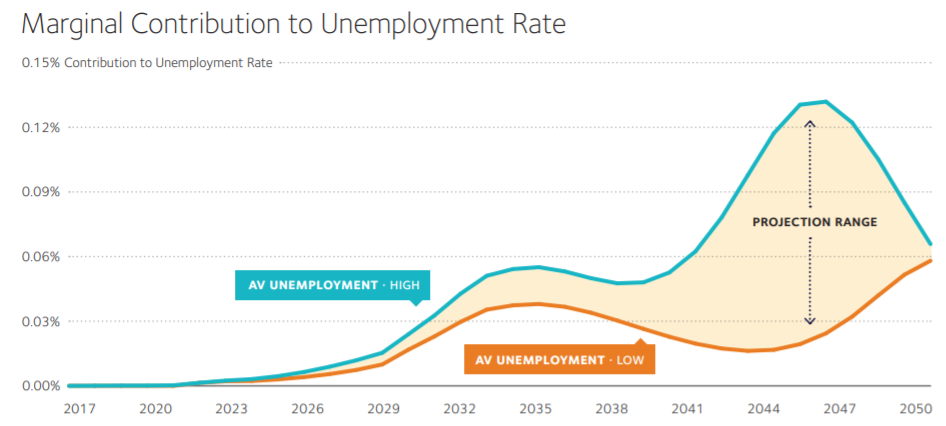Economic Impacts
The economic effects of autonomous vehicles are a major concern of their implementation into society. While they may seem beneficial in many ways, there are also concerns about unemployment rates increasing with their release. On the other hand, the vehicles could also fill in any gaps in employment that may exist with the transportation of people or products. Apart from employment and supply chain effects, autonomous vehicles are also expected to have an impact on the ridesharing and fuel industry.
Autonomous vehicles, like many other automated tasks that robots have taken over, are a threat to thousands of jobs across the United States, especially those in the trucking, taxi, or ridesharing industry. Autonomous vehicles would allow for driverless ridesharing, driverless trucking, and driverless taxis, which would, in turn, lead to the businesses being more efficient. In return, however, unemployment rates would rise. While this is a major concern for some, the national unemployment rate is predicted to only rise by .13% at its peak due to the implementation of autonomous vehicles according to the graph from Securing America’s Future Energy below. In addition, “if [autonomous vehicle] deployment proceeds more gradually, the impacts will be lower,” according to the report, so this should not be a major economic concern, especially when compared to the mild recession in the early 2000s that contributed 1.3% to the national unemployment rate (Carson, 39).

Image from: Erica Groshen et al., Preparing U.S. Workers and Employers for an Autonomous Vehicle Future, June 2018
While this unemployment is a minor setback for autonomous vehicles, they also provide a solution for any employment gaps that may already exist in the transport of goods. One example of an issue this may help fix is the current supply chain issues due to the COVID-19 pandemic. Not only will autonomous vehicles reduce costs, but they would also reduce drive times and delays due to the lack of a human driver according to Karter Smith. There would no longer be a need for rest stops, and the trucks could drive continuously without the need for breaks or sleep (Smith). This would help ease many of the costs and delays in the national supply chain.
One final effect on the economy would be the impacts on the ridesharing and car insurance industries. With autonomous vehicles, the need for private car ownership is nearly eliminated due to the ability to summon an autonomous vehicle with the push of a button and have it arrive in minutes. In addition, private car ownership is already inefficient, as most cars sit idle 95% of the time according to Jeff McMahon. With the use of autonomous vehicles, as well as computer algorithms to find efficient routes for transporting people to their destinations, this new form of public transportation can be used efficiently nationwide rather than each city having its own system. This, coupled with the fact that 94% of accidents are caused by human error would also eliminate the need for car insurance (McMahon). While this may hurt those in the industry, for many Americans this is a financial relief, especially for groups insurance companies deem as risky drivers. Overall, the economic effects of autonomous vehicles are projected to positively affect the lives of most Americans.